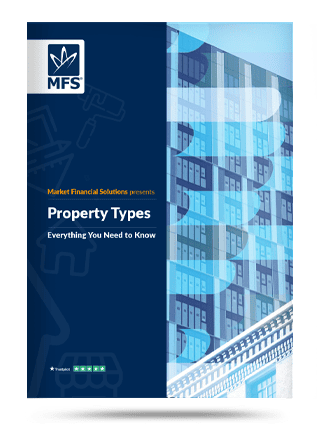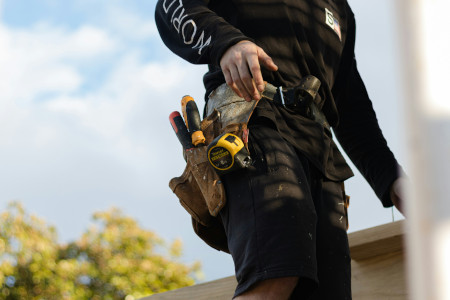Disclaimer
Market Financial Solutions are a bridging loan and buy-to-let mortgage provider, not financial advisors. Therefore, Investors are encouraged to seek professional advice. The information in this content is correct at time of writing.

Much is written about supply and demand within the UK property market. But it can be tricky to visualise just how many houses are in the UK. Let alone understand how many more we need.
For residential property alone, there are multiple options available to property investors. And this is before you factor in countless sub-categories and market dynamics.
To help you better understand your options, this blog will break down how many potential assets are out there. We’ll highlight where supply is lacking, and where investment could be sorely needed.
Residential property – how many houses in the UK could be utilised?
The number of dwellings in England grew from 21.2 million in 2001, to around 25 million by 2021. There were an estimated 23.7 million occupied residential dwellings and of these, 15.5 million (65%) were owner occupied, 4.3 million (18%) were private rented, 1.5 million (6%) were local authority, and 2.4 million (10%) were housing association homes. More recent data suggests there are around 29.9 million dwellings in the UK, made up of roughly 25 million dwellings in England, 1.5 million dwellings in Wales, 2.67 million dwellings in Scotland, and 822,083 in Northern Ireland.
There were 19.3 million families spread across the UK in 2021, according to the latest data from the ONS. In recent years, we’ve seen changes in family dynamics, which has had an impact on the types of homes we’re living in.
In the 10 years to 2021, there was an increase in the number of families that included a couple in a legally registered partnership. We also saw a rise in the number of people living alone, and the number of young people living at home with their parents.
What types of property are people living in?
You’ll need to not only better understand how many houses are in the UK, but what types are becoming more necessary. Across England and Wales, most households (77.9%) live in houses or bungalows.
Some 21.7% live in a flat, maisonette or apartment, while 0.4% live in a caravan or other mobile or temporary structure. When looking over the last 10 years, it’s clear to see how economic pressures have forced adaptation.
In 2021, 62.5% of the population owned their accommodation. Down from 64.3% in 2011. Also, the proportion of households living in a flat, maisonette or apartment increased the most over the decade. Rising from 4.9 million in 2011, to 5.4 million in 2021. This could be the result of rising costs limiting people’s ability to live in larger homes.

We need more supply to meet demand
When it comes to housing though, what will be on most people’s minds is the general lack of it. It’s believed 300,000 homes need to be built every year to keep up with demand. We’ve rarely come close to that figure.
The wider population may be more likely to ask themselves why aren’t more homes available, rather than how many houses we have in the UK. In fact, between 2011 and 2021, the population grew faster, or at the same pace, as the number of homes in 150 out of 309 local authorities.
Regardless of where new houses could come from, we need to build and provide more suitable options to have a healthy supply over the coming years. The latest official projections suggest our population could reach nearly 70 million by 2030. Where will these people live?
Source: Statista, ONS, ONS, Department for Levelling Up, Housing & Communities, Mortgage Solutions, ONS
Should we look to the commercial market for a solution?
Demand for commercial property has been hit in recent years. Likely because of the pandemic, changing working practices, and wider economic challenges. Commercial property deals recently declined to the lowest level seen in over a decade.
There were £7bn worth of deals transacted in the final quarter of 2022, the lowest quarterly total since at least 2010. This plummeting demand dragged prices down last year.
Availability is also an issue in the commercial world. England’s stock of office space fell at its fastest rate for 20 years in late 2022. The number of clothing retail businesses in the UK has fallen consistently over the last 5 years.
And 50 UK shops closed for good every day in 2022. Perhaps when thinking about how many houses are available in the UK, you could look towards empty stores for conversion projects.
Source: Financial Times, Reuters, Financial Times, IBIS World, The Guardian
Opportunity could be on the horizon
Despite the difficulties facing the property market, rising demand and prosperity could be on the horizon. We’re likely to face challenges in 2023, but we should focus on the long-term. Opportunity could be just around the corner.
We could see rising demand from overseas buyers over the coming months. New environmental legislation could force capital to flow into existing buildings, and rents may still rise handsomely. House prices dipped in late 2022, but Savills expects overall prices to rise by 6.2% by 2027.
Demand for quality property will likely be driven by continuing supply issues. Michael Gove, the Levelling Up Secretary, has watered down the Government’s 300,000 new home quota. It is now “advisory”, rather than targeted.
What’s more, we could see more focus placed on better utilisation of existing assets. According to analysis of the latest council taxbase figures, there are 257,331 homes in England classed as long-term empty homes. Meaning they have been left vacant for more than 6 months.
Geographically, property investors may want to focus on large cities. As to be expected, some of the biggest housing shortages can be found in London, Brighton, Bristol, and York.
But, property investors will need to act quickly if they come across any opportunities – even now. The average shelf life of mortgages has dropped to a record low of 15 days. Additionally, demand has reached such unprecedented levels in the rental market, that the sector has been dubbed a “wild west”.
You could help restore calm to the market and provide much needed optionality. To achieve this, you’ll need a specialist lender who can match the market’s speed and tenacity.
Source: FT Adviser, Investment Week, RW Invest, Mortgage Solutions, FT Adviser, Centre for Cities, Mortgage Solutions, The Telegraph, Big Issue

The Complete Guide to
Property Types
Everything you need to know
- Residential property types
- Commercial property types
- Property types by ownership
- Property types by investment goal
- Regional variations & more




